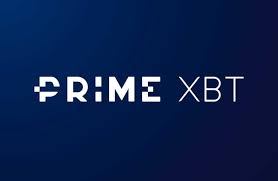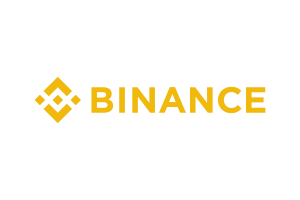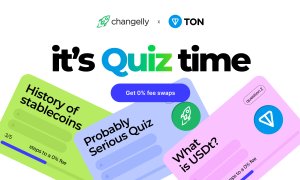Why does MiFID II overlook FX white labels when the inducement rule is so clearly defined? – Op Ed
If MiFID II rulings extend toward the white label partner and consider it to be a conflict of interest unless fees and charges are detailed to customers, what is to stop the customers going directly to the brokerage which provides the white label partner and trading directly on its MetaTrader

Ever since the dawn of the easy access for small brokerages to take a complete off-the-shelf brokerage package from a third party software provider came about in the mid-2000s, there has always been a clear case for eschewing what would on first glance appear to be an easy route to market and investing substantially in building a self-sufficient brokerage from the ground up.
The imminent demise of the MetaTrader 4 platform has been met with some surprise, some skepticism and in FinanceFeeds case, more than a degree of criticism as to the way the ubiquitous third party platform that dominates the small to medium retail FX brokerage space is being decommissioned.
The platform monopoly may well be at its legacy software orientated nadir, however apart from a will to finally move brokerages onto the newer (although still hardly a spring chicken) MetaTrader 5 platform, there has to be far more than meets the eye.
Until now, MetaQuotes has had something of a stranglehold on a market that was largely empowered by its own easy-to-set-up third party solution, that being smaller brokerages in peripheral regions to the main financial centers of the world, whose owners do not wish to invest in research and development or in house support, and simply want to advertise, and sell to retail traders.
FinanceFeeds recently closely looked at why a vast company such as MetaQuotes which dominates the third party platform sector and has given rise to over 1231 brokerages being in current operation with the same front end trading system, deducing that one particular reason could be the current plethora of infrastructural requirements and changes that are being instigated by regulatory authorities across Europe, largely as a result of the stipulations within MiFID II, set out by the European Securities and Markets Authority (ESMA), and their pending review of the CFD space.
At a cursory glance, it may appear that any link between regulation aimed at brokerages and the ability for a liquidity and client agnostic software platform would be very tenuous indeed, however there is much more to consider than a situation in which a broker’s compliance and trade execution divisions are mutually responsible for compliance with regulations.
Indeed, it is clear that absolutely no MetaTrader based brokerages have been able to successfully list their companies on public exchanges, regardless of size and income, which in our opinion is because an auditor would conclude that their intellectual property is actually on someone else’s platform, hence it is impossible to define an intrinsic value for the purposes of listing stock.
Looking at the firms of similar size to some of the largest MetaTrader based brokerages, their stock is listed in London and New York and has been for several years.
One aspect that has been overlooked is the structure of companies which do not own their own MetaTrader servers, namely those which are ‘white label’ partners of MetaQuotes by default, paying their $5000 white label license fee and then a monthly service fee, and attaching their trading platform to the MetaTrader server of another retail brokerage which executes on its own dealing desk.
Such white label partners are often small brokerages, however their product offering is almost identical to other white label partners and of course their providers, as owners of such firms are not masters of their own destiny.
Even if a dealing desk exists that transfers trades to a provider, the provider will often be another retail brokerage which executes trades on its own dealing desk in the same vein as it would do with its own direct retail clients.
Many of such firms, at an estimate 135 out of 154 retail brokerages whose regulatory licenses are issued by non-bank financial markets regulators that are subject to the MiFID II rulings, are operating under this methodology, and that raises a point which should be taken into consideration, that being the ‘inducements’ rulings which are clearly set out by the European Securities and Markets Authority (ESMA).
Aside from the specific rules that relate to the payment for research that should be external to the trading terms in order to stifle conflicts of interest between research or edcuation providers and their clients by taking non-disclosed favorable commission terms from brokers, there are other factors.
The inducements rule requires firms, where applicable, to inform the client on mechanisms for transferring to the client the fee, commission or monetary or non-monetary benefit received in relation to the
provision of the investment or ancillary service.
It also prohibits those firms which are providing clients with either investment advice on an independent basis or with portfolio management services from accepting and retaining fees, commissions, or any monetary or non-monetary benefits from third parties in relation to the provision of the service to clients.
Quite often, white label partners operate in a similar structure to introducing brokers (IBs) apart from that they are considered brokerages in their own right due to the client directly facing the white label partner and depositing and withdrawing funds from them, as well as trading directly on their platform.
The similarity to an IB appears when looking at the relationship between white label brokerage and its provider, which often produces the trading conditions, dictates execution methodology and internalizes trades on its own dealing facility, hence splitting client losses with the white label partner if a b-book exists with no live market connectivity, or splitting trading commissions with the white label partner if it does.
This type of arrangement, whilst not directly noticed by regulators or retail traders, is what MiFID II has attempted to address in the multi-level marketing and IB sector in Europe in which a conflict of interest was highlighted between broker, IB and customer.
Indeed, Meir Velenski, a renowned IB himself, has detailed the effect on the IB networks this ruling has had very comprehensively and has suggested how to rectify it and remove the conflict of interest.
Therefore, if gauging the MiFID II view on the remuneration of IBs and ancillary service providers by brokers, the same applies to white label FX brokers which are being remunerated by brokerages that provide the trading environment and ultimately onboard the customer database of the white label brokerage.
When ESMA finally catches onto how white labels are structured, adherence to the inducements rule will liekly apply to them in that the existence, nature and amount of the payment or benefit or, where the amount cannot be ascertained, the method of calculating that amount, must be clearly disclosed to the client, in a manner that is comprehensive, accurate and understandable, prior to the provision of the relevant investment or ancillary service.
Where applicable, the firm must also inform the client on mechanisms for transferring to the client the fee, commission, monetary or non-monetary benefit received in relation to the provision of the investment or ancillary service, which indeed relates to disclosure of omnibus accounts between white label partner and broker, and margin trading which is taking place on the trading server and dealing desk of a different firm that is providing the white label partner with services for which it remunerates the white label partner with commission.
If a white label partner is providing any managed accounts to its clients, the firm is not allowed to accept and retain fees, commissions or any monetary or non-monetary benefits paid or provided by any third party or a person acting on behalf of a third party in relation to the provision of the services to clients.
Excluded from the prohibition are minor non-monetary benefits that are capable of enhancing the quality of service provided to a client and are of a scale and nature such that they could not be judged to impair compliance with the firm’s duty to act in the best interest of the client. The MiFID II rules state that such minor non-monetary benefits must be clearly disclosed.
This is once again a further attestation to the need to build sustainability by conducting trading on a system which is owned in house, and connects to market liquidity that has direct relationships, either as a MetaTrader brokerage with its own servers and an integration to genuine prime of prime market liquidity via one of the industry recognized integration and liquidity management companies, those being Gold-i, PrimeXM and oneZero, or via a proprietary trading system.
If MiFID II rulings extend toward the white label partner and consider it to be a conflict of interest unless fees and charges are detailed to customers, what is to stop the customers going directly to the brokerage which provides the white label partner and trading directly on its MetaTrader ?
QED.









